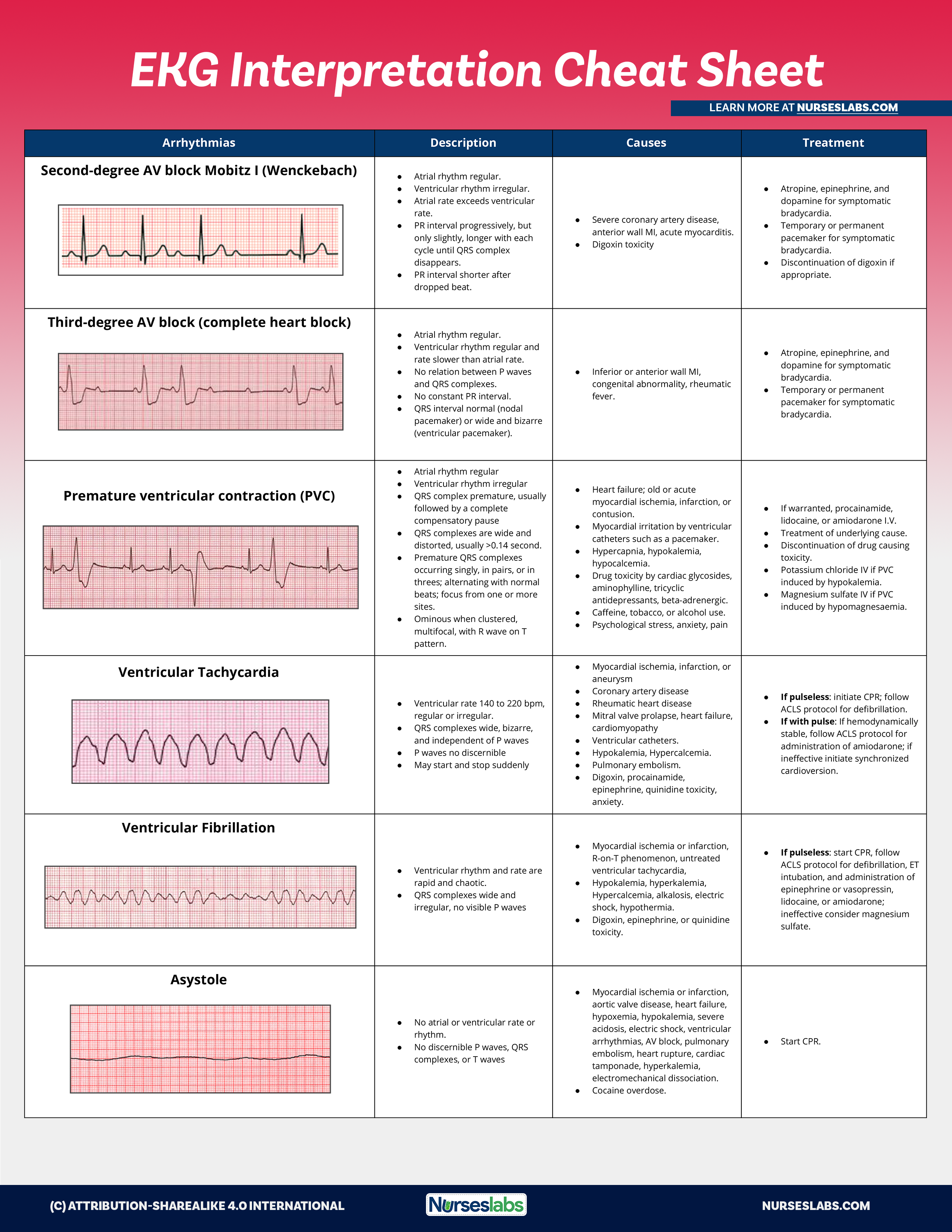
All Ecg Rhythms. Ectopic atrial rhythms including atrial tachycardia multifocal atrial tachycardia and junctional rhythms all have p waves that are not of sinus morphology and will be reviewed in detail later. The rhythm is best analyzed by looking at a rhythm strip. Ekg rhythms are used to characterize certain heart conditions. Broad complex escape rhythms qrs complexes 0 12 seconds duration originate from below the bifurcation of the bundle of his.

Arrhythmia is an irregular cardiac rhythm or an abnormally fast or slow heart beat. Variations in the ekg rhythms can point to problems with different parts of the heart and can help medical professionals provide the correct treatment. Cardiac function is maintained by a junctional or ventricular pacemaker. Abnormal ecg rhythms are called arrhythmia although sometimes dysrhythmia is used. The rate is usually 20 40 bpm. Ecg rhythms are used to evaluate normal or abnormal cardiac conditions.
Cardiac function is maintained by a junctional or ventricular pacemaker.
Ectopic atrial rhythms including atrial tachycardia multifocal atrial tachycardia and junctional rhythms all have p waves that are not of sinus morphology and will be reviewed in detail later. P waves p wave for every qrs. The rhythm is best analyzed by looking at a rhythm strip. A longer rhythm strip recorded perhaps recorded at a slower speed may be helpful. Ectopic ventricular rhythms occur commonly in acute myocardial infarction. Ectopic atrial rhythms including atrial tachycardia multifocal atrial tachycardia and junctional rhythms all have p waves that are not of sinus morphology and will be reviewed in detail later.